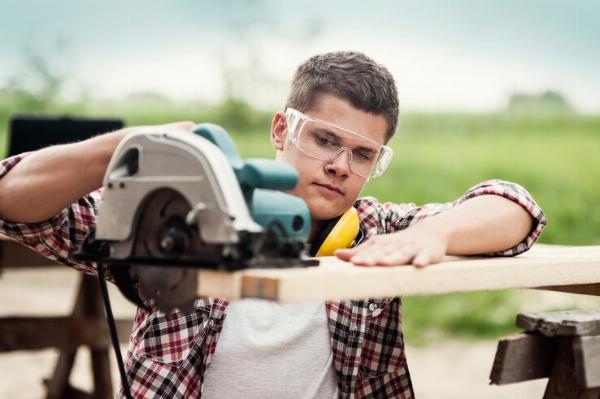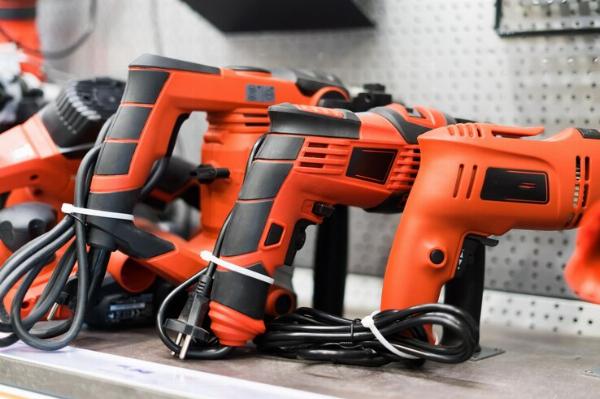How to Maximize Efficiency with Your Wood Cutting Machine

Strong 8k brings an ultra-HD IPTV experience to your living room and your pocket.
Wood cutting machines are essential tools for many industries, from carpentry and furniture making to large-scale construction projects. Whether you're a professional or a DIY enthusiast, optimizing the performance of your wood cutting machine can save you time, increase productivity, and improve the quality of your work. Here’s a comprehensive guide on how to maximize efficiency with your wood-cutting machine.
1. Choose the Right Blade for the Job
The blade is the most critical part of any wood-cutting machine. Using the right blade ensures smoother cuts, faster work, and less wear on the machine. There are various types of blades for different applications:
- Ripping blades are ideal for cutting along the grain.
- Crosscut blades work best for cutting across the grain.
- Combination blades offer versatility for general use.
- Carbide-tipped blades provide more precision and durability for hardwoods and composites.
2. Regular maintenance is key
Keeping your machine in top condition will extend its life and improve efficiency. Maintenance involves regular cleaning, lubricating moving parts, and checking for wear and tear. Important areas to focus on include:
- Blade sharpening or replacement: A dull blade requires more effort and produces poor cuts.
- Dust removal: Dust and debris can clog up the machine, causing overheating and decreased performance.
- Lubrication: Ensure that all moving parts are well-lubricated to reduce friction and extend the machine’s lifespan.
3. Calibrate Your Machine Regularly
Proper calibration ensures that your wood-cutting machine operates at peak accuracy. Misalignment can lead to inaccurate cuts, wasted materials, and potentially dangerous working conditions. Regular calibration includes:
- Checking blade alignment: Make sure the blade is perfectly aligned with the fence and the table.
- Adjusting cutting depth: Use the right cutting depth for your material to ensure smooth, efficient cuts.
4. Optimize Cutting Speed and Feed Rate
Operating your wood-cutting machine at the correct speed and feed rate can drastically increase efficiency and the quality of your cuts. Different types of wood require different speeds:
- Hardwoods like oak or maple typically need slower speeds and more feed pressure.
- Softwoods like pine or fir can be cut at higher speeds with less pressure.
- Running the machine too fast can overheat the blade, while going too slow can burn the wood and leave rough edges.
5. Use high-quality wood cutting machines
Investing in a high-quality woodcutting machine will make a noticeable difference in both efficiency and accuracy. Top brands offer machines with features like better dust collection systems, quieter motors, and more precise adjustments. If you're frequently working with wood, it's worth considering premium models with:
- Adjustable blade heights and angles for flexibility.
- High-torque motors for handling thicker and denser materials.
- Safety features like blade guards and emergency stops.
6. Implement Proper Safety Measures
Safety and efficiency go hand in hand. An unsafe working environment not only slows down the workflow but also puts you and your team at risk. Here are some critical safety tips:
- Wear protective gear: Always wear safety goggles, ear protection, and dust masks.
- Use push sticks: Avoid placing your hands near the blade by using push sticks for smaller pieces of wood.
- Secure the wood: Ensure the wood is properly clamped down to avoid kickbacks and uneven cuts.
7. Plan Your Cuts and Work Area Layout
Efficient woodworking requires planning. Before starting your project, take time to:
- Map out your cuts: Mark where to cut and the order of operations. This reduces mistakes and material wastage.
- Organize your workspace: Keep all tools and materials within easy reach to minimize downtime.
8. Upgrade to Digital or CNC Wood Cutting Machines
If you’re looking to significantly boost productivity, consider upgrading to digital or CNC (Computer Numerical Control) wood cutting machines. These machines offer precision and automation that can handle complex cuts with minimal human intervention. Key benefits include:
- Faster production times: CNC machines work autonomously, allowing you to focus on other tasks.
- Consistent results: Achieve perfect cuts every time without the variability of manual operation.
- Reduced waste: CNC machines optimize the use of materials by calculating the most efficient cutting patterns.
9. Monitor blade temperature
Heat is the enemy of efficiency in wood cutting. Excessive heat can warp blades, cause burns on the wood, and lead to motor failure. To avoid overheating:
- Use coolant sprays: Some machines are compatible with coolant sprays to keep the blade cool.
- Take breaks: Give the machine time to cool down between intensive cuts.
- Ensure proper ventilation: Keep your work area well-ventilated to dissipate heat.
10. Train Your Team or Yourself on Best Practices
Efficiency comes from expertise. Whether you're managing a team or working solo, regular training ensures that the wood cutting machine is used properly. Training should cover:
- Safe handling of the machine: reduce accidents and breakdowns.
- Optimal cutting techniques: Ensure the machine is used to its full potential.
- Problem-solving: Train on how to troubleshoot common issues like blade dullness or misalignment.
Conclusion
Maximizing efficiency with your wood-cutting machine doesn’t just mean faster cuts. It involves careful selection of blades, proper maintenance, regular calibration, and safe operation. Whether you're using a manual machine or a high-tech CNC cutter, following these tips will ensure that you get the best results from your wood cutting machine, ultimately saving time, money, and effort. By sourcing your equipment from reliable industrial tool suppliers, you can also ensure that you are using high-quality tools designed for optimal performance and durability, enhancing the overall efficiency of your operations.
By focusing on both the machine and your technique, you'll be able to tackle any woodworking project with confidence and precision.
Note: IndiBlogHub features both user-submitted and editorial content. We do not verify third-party contributions. Read our Disclaimer and Privacy Policyfor details.







